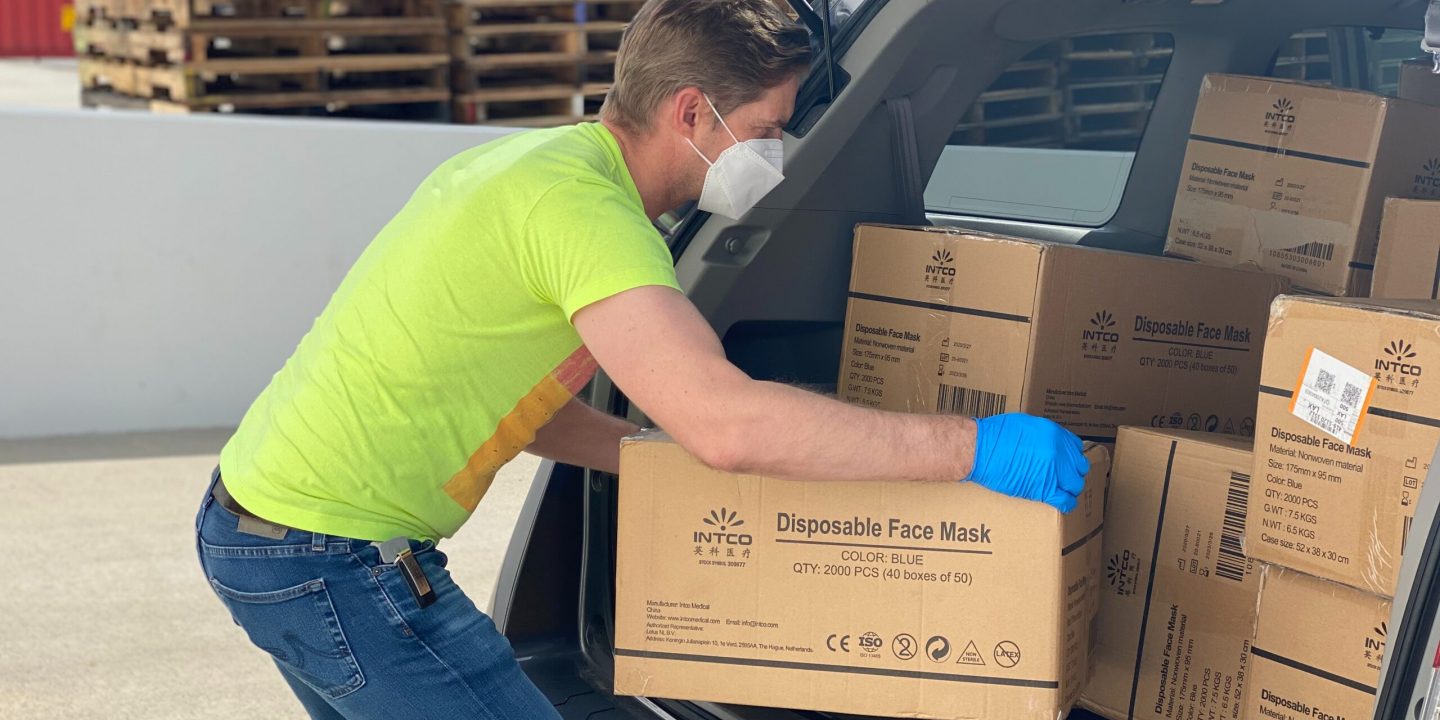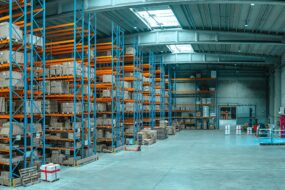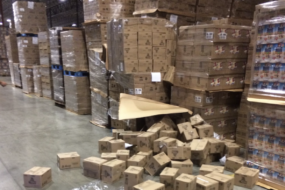Contents

Order fulfillment is one of the most important factors in customer satisfaction, as it refers to the delivery of the order to the customer. A good order fulfillment strategy can help you retain customers and create customer loyalty.
A poor customer experience can cost you business. In the United States, more than 80% of consumers stopped doing business with a company after a negative experience.
Positive customer experiences, on the other hand, can help you to create trust and build a strong relationship with your customers. When their orders are delivered on time, in good shape, and as expected, this enhances the customer experience.
What Is Order Fulfillment?
The order fulfillment process is the entire lifecycle of a sale, from the time the order is placed all the way through to when it is delivered to a customer. The flow of order fulfillment looks like this:
- The customer places an order.
- The order is received, often by a third-party logistics (3PL) provider to which order fulfillment is outsourced.
- The order is picked from its location in the warehouse, distribution, or fulfillment center.
- The order is packaged and labeled for shipping.
- The order is shipped through a shipping carrier to the customer.
- The order is delivered to the customer.
4 Steps in Order Fulfillment
Order fulfillment is often outsourced to a 3PL, which can help you to scale your growing business and ensure that orders are handled in an automated and efficient manner. The 3PL can handle all aspects of order fulfillment, from receiving the order from your sales channel to picking, packing, and shipping it.
The 3PL will house your inventory in one or more distribution or fulfillment centers. They’ll work directly with major shipping carriers to ensure the most affordable and efficient shipping methods.
1. Receiving
The first step in order fulfillment is receiving and storing the inventory at a fulfillment center. 3PL providers often use advanced technology and automation to receive goods from suppliers, organize them in a warehousing storage location, and keep tabs on the inventory.
With a good order management system, the 3PL can track and monitor inventory to ensure that when orders are received from customers, they can be quickly turned around.
2. Picking
The next step in order fulfillment is picking. Once an order is received in the 3PL’s fulfillment system, it is pushed to a picking team. The picking team will receive a packing slip with the order information (items and quantities) and where the products are located within the facility. The picking team will collect the items and pass them on to the packing team.
3. Packing
The third step in the order fulfillment process is packing. Orders are packed for security and efficiency. It is important to ensure that the proper packing materials are used to secure the products, for example, and that they are packed into as small of packaging as possible.
Packages are billed based on actual or dimensional weight (the space they take up). Because of this, smaller packaging is optimal.
3. Shipping
The final step in order fulfillment is shipping. A 3PL provider will work with existing relationships with major shipping carriers to provide you with affordable and efficient shipping options.
The 3PL will attach a shipping label to the order, and the carrier will typically pick up the package directly from the fulfillment center. After the order has been picked up by the shipping carrier, tracking information is shared with you (and often with your customer), so the order can be tracked in real time.
Tips for Proper Order Fulfillment
Customers expect their orders to be shipped and received in a timely fashion. It is important to optimize order fulfillment processes to achieve this.
To ensure proper and optimized order fulfillment, you should use the following tips:
- Optimize your receiving processes. Orders and shipments need to be processed as soon as possible to ensure efficient order fulfillment. This starts with having a strong and optimized receiving process, so you can quickly turn inventory over.
- Adequately forecast demand. It is important to have enough inventory on hand to handle spikes in sales, so you can keep up with customer demand and efficiently fulfill orders. Use historical order data to account for seasonality and peak sales times.
- Have backup plans in place. There are inevitably going to be issues during order fulfillment at some point. Packages can be damaged or lost in transit. It is important to have a strategy for these external factors that you cannot control.
Developing an Order Fulfillment Strategy
Order fulfillment will look different for each business. There is no one order fulfillment strategy that is going to work for everyone.
There are some important factors to consider when developing your order fulfillment strategy, including your business size, order volume, technology, sales channels, the location of your customers, inventory, and customization options.
Order Volume & Business Size
When your business is still small, and you are not fulfilling very many orders per month it can be more cost-effective to manage your own order fulfillment and to do this in-house. As your business grows and you expand the number of SKUs you carry, and your sales increase it can be helpful to outsource order fulfillment. You should work towards creating an e-commerce order fulfillment strategy that is scalable and can evolve with you as your business grows.
Technology and Sales Channels
Your order fulfillment strategy needs to integrate into your online sales channels and work with your technology. Order fulfillment software that integrates with your e-commerce sales platform can help you efficiently manage your order fulfillment processes.
Technology should work with you and be leveraged to properly manage your inventory. It should ensure that you can quickly receive, pick, pack, and ship online orders. As soon as an order comes in, it should be pushed automatically to your fulfillment operations.
Location of Customers & Inventory
To optimize shipping routes, it is important to try and shorten the distance between where your product is shipped from and to. Shipping rates and times are calculated based on shipping zones. The more zones a package must travel through (the farther it has to go), the more expensive it will be and longer it is going to take.
To manage customer shipping expectations, it is beneficial to use fulfillment or distribution centers that are closer to your customer base. 3PL providers often use more than one fulfillment center to split inventory. This ensures that they are shipping the shortest possible distance for the most cost-efficient and fastest shipping options.
Customization Options
If your products are custom-made or require specialized packaging or gift wrapping, it can be optimal to handle order fulfillment in a more hands-on manner. When your products are made-to-order, your order fulfillment strategy will need to be tailored to support this.
Options for Order Fulfillment
There are several options when it comes to developing an order fulfillment strategy. These can include fulfilling orders yourself, using a 3PL, or dropshipping. Your needs are going to differ from those of your competitors.
In-House Fulfillment
Typically, when an e-commerce business is just starting out, they will complete all parts of the order fulfillment process themselves. This is called self-fulfillment, merchant fulfillment, or in-house fulfillment. This option of order fulfillment gives you complete control over your entire retail supply chain.
As your order volume increases, so will the need to either outsource your order fulfillment or invest in fulfillment infrastructure, such as technology, labor, warehouses, and equipment.
Outsourcing Fulfillment
Supply-chain related tasks, such as inbound and outbound goods logistics, can commonly be outsourced to a 3PL. As your business and order volume expands, order fulfillment logistics can become more complex and time-consuming.
A 3PL uses advanced technology, giving you a high level of visibility into your inventory and retail supply chain. The 3PL can take care of all your order fulfillment needs, from storing your product in strategically placed fulfillment centers to inventory receiving, picking, packing, and shipping. Using a 3PL can free up your time for other important business aspects and tasks.
Dropshipping
This form of order fulfillment is the most hands-off, as all inventory is produced, stored, and shipped directly from the manufacturer. A customer will place the order, which will then be forwarded to the manufacturer. The product will be shipped straight from there to the customer. This method gives you the least amount of control over your retail supply chain but can also involve lower overhead.
Manufacturers are commonly located overseas. This can mean that shipping times are longer, leading to less customer satisfaction.
Order fulfillment is a vital part of your e-commerce business and key to a positive customer experience. As your business grows, it can often be optimal to work with a 3PL for all of your order fulfillment needs.
References
Customer Retention Statistics – The Ultimate Collection for Small Businesses. (January 2021). Small Business Trends.
What Is Dimensional Weight? (2022) FedEx.




